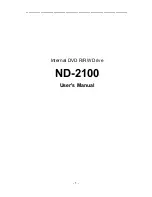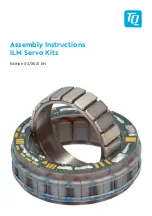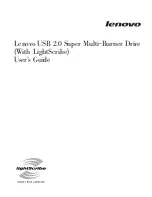
7 Special Conditions
7.1 Alternative Braking Methods
7.1.1 DC Injection Braking
If the 3-phase winding of the stator is fed with direct
current, a stationary magnetic field
Φ
is set up in the
stator bore causing a voltage to be induced in the bars of
the cage rotor as long as the rotor is in motion. Since the
electrical resistance of the rotor cage is very low, even
small induced voltages can create a high rotor current.
This current produces a strong braking effect on the bars
and hence on the rotor. As the speed decreases, the
frequency of the induced voltage decreases and with it the
inductive impedance. The ohmic resistance of the rotor
gradually becomes dominant and so increases the braking
effect as the speed comes down. The braking torque
generated decreases steeply just before standstill and
finally ceases when there is no further movement. Direct
current injection braking is therefore not suitable for
holding a load at rest.
FC 102, 202, 301 and 302-Series
An over-modulated DC current added to the AC current
works as an eddy current brake (
≠
0 s).
7.1.2 AC-braking
When the motor acts as a brake, the DC-link voltage
increases because energy is fed back to the DC-link. The
principle in AC-brake is to increase the magnetisation
during the braking and thereby increase the thermal losses
of the motor.
FC 102, 202, 301 and 302-Series
The brake energy is distributed in the motor by changing
the loss conditions in the motor. The AC brake function
cannot be used in applications with high cycling frequency
since this overheats the motor (
[2] AC Brake
). By using factory settings it is
possible to brake with about 50% of rated torque below
2/3 of rated speed and with about 25% at rated speed.
The function is not working at low speed (below 1/3 of
nominal motor speed).
VLT 2800
By using parameter 144 in VLT 2800, it is possible to adjust
the size of the generator torque that can be applied to the
motor without the intermediate circuit voltage exceeding
the warning level.
The braking torque depends on the speed. With the AC-
brake function enabled and parameter 144=1.3 (factory
setting) it is possible to brake with about 50% of rated
torque below 2/3 of rated speed and with about 25 % at
rated speed. The function is not working at low speed
(below 1/3 of nominal motor speed). It is only possible to
run for about 30 s with parameter 144 greater than 1.2.
NOTICE
If the value in parameter 144 is increased, the motor
current simultaneously increases significantly when
generator loads are applied. The parameter should
therefore only be changed if it is guaranteed during
measurement that the motor current in all operating
situations never exceeds the maximum permitted current
in the motor. Note: The current cannot be read out from
the display.
7.1.3 Mechanical Holding Brake
A mechanical holding brake mounted directly on the
motor shaft normally performs static braking. In some
applications, the static holding torque is working as static
holding of the motor shaft (usually synchronous
permanent motors). A holding brake is either controlled by
a PLC or directly by a digital output from the frequency
converter (relay or solid state).
NOTICE
When the holding brake is included in a safety chain:
A frequency converter cannot provide a safe control of a
mechanical brake. A redundancy circuitry for the brake
control must be included in the total installation.
Special Conditions
Design Guide
30
Danfoss A/S © Rev. 05/2014 All rights reserved.
MG90O202
7
7
Содержание VLT Brake Resistor MCE 101
Страница 2: ......
















































